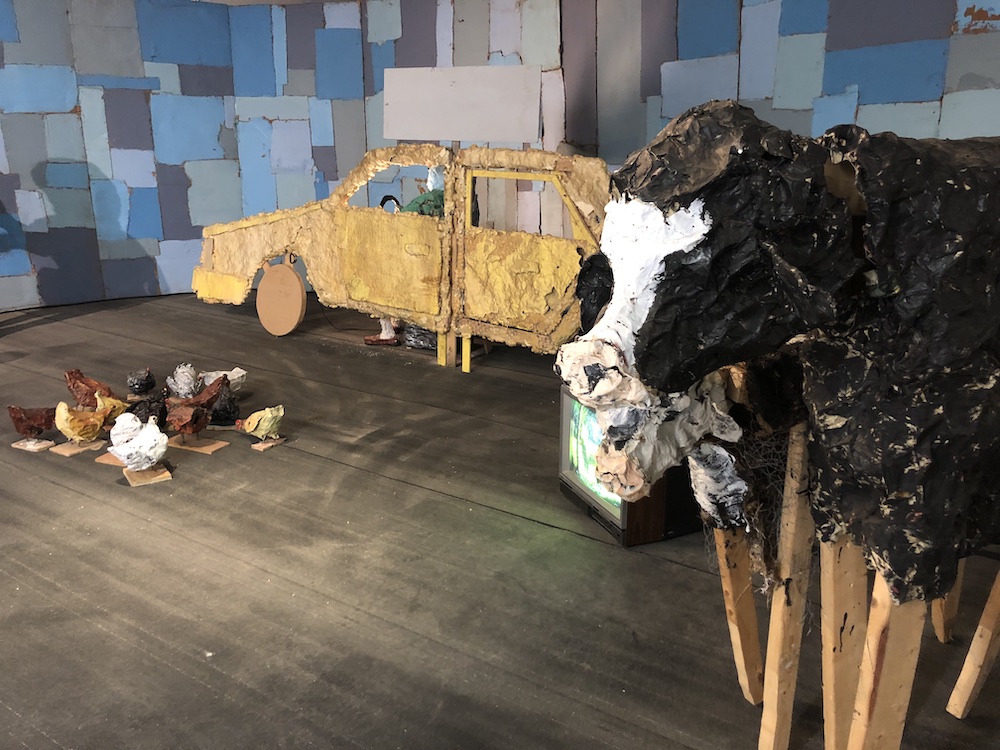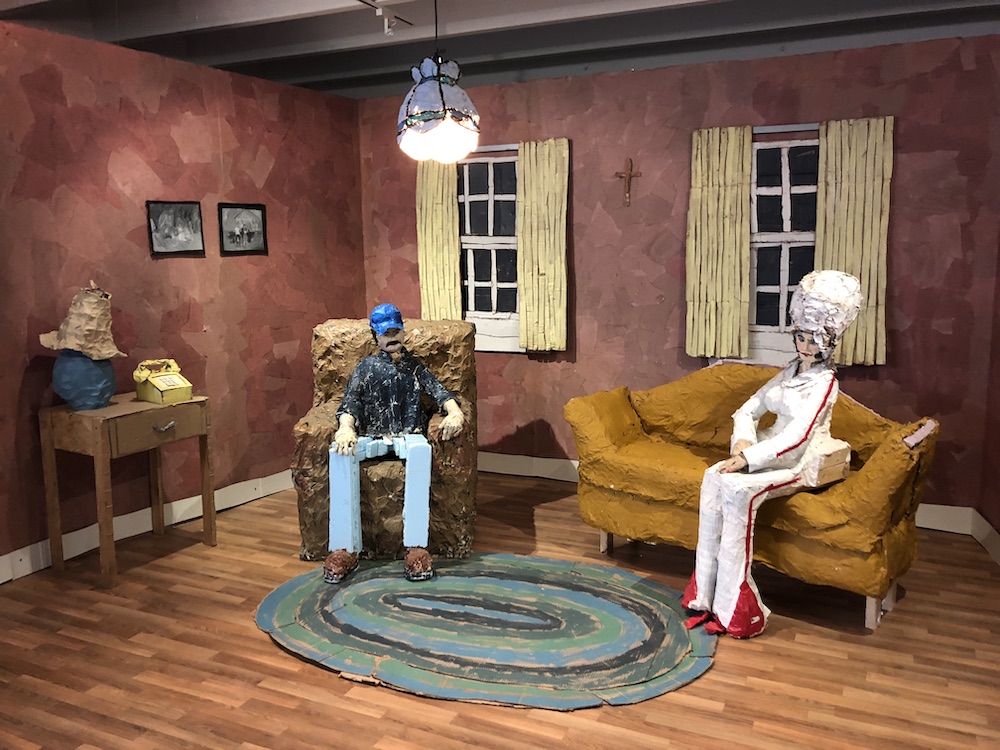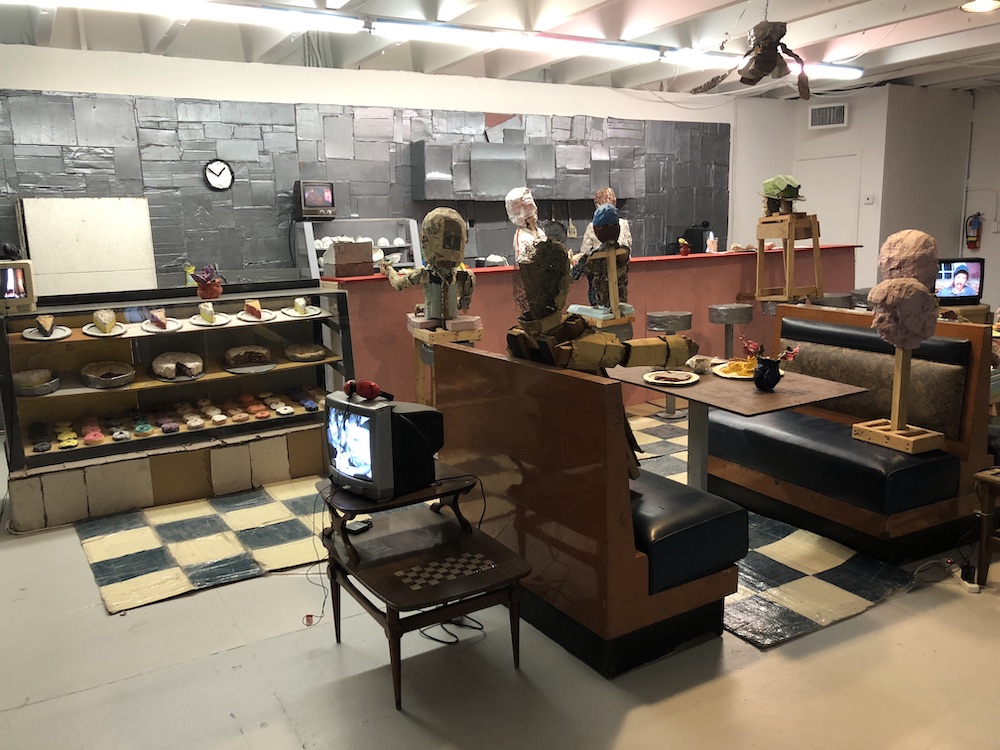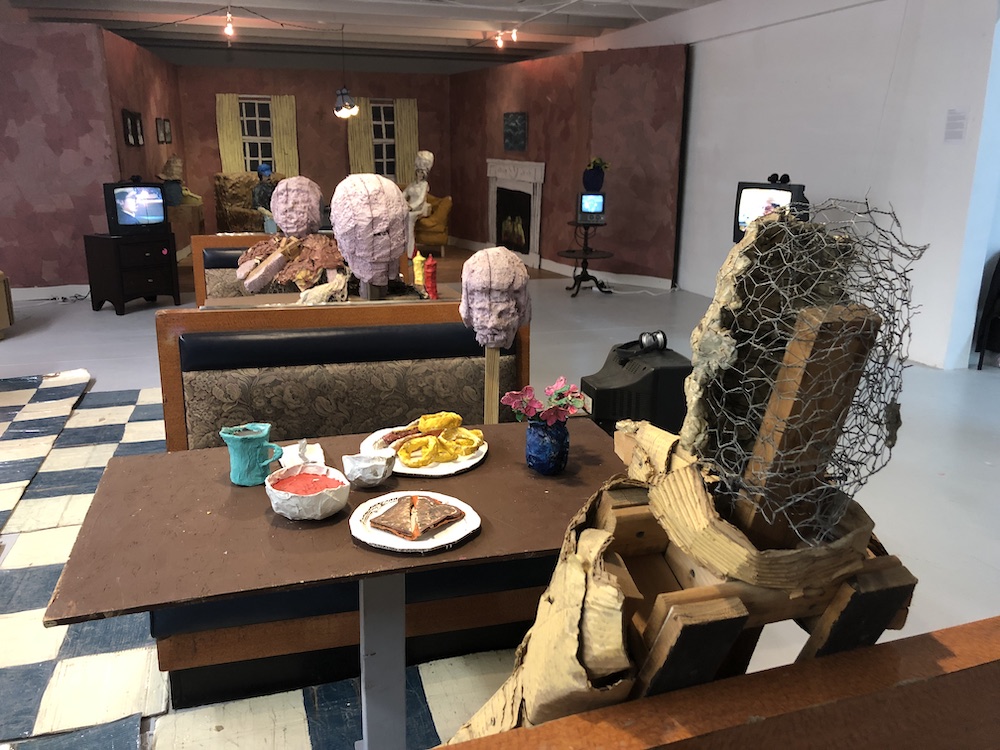[ad_1]

Partial installation views of Cate Giordano’s After the fire is gone (2017) at the Margulies Collection in Miami.
PHOTOS: ANDREW RUSSETH/ARTNEWS
Many years ago, when I was playing lacrosse as a youth, I had a coach who always urged us to play “scrappy,” by which he meant competing with a certain kind of rough-edged, even if inelegant, determination. The classic example: kicking—rather than throwing—the ball into the goal.
In any sense, that idea got stuck in my head this afternoon while taking in Cate Giordano’s sprawling installation at the Margulies Warehouse in Miami. Giordano’s latest work is a master class in getting the job done by any means necessary. It is not clean, but it is extremely effective.

Using newspaper, plywood, cardboard, chicken wire, paint, and other inexpensive materials ,she has constructed a whole world: a diner with a pastry case to make Claes Oldenburg envious, a living room where a Kienholzian ennui shares space with crackling humor (what’s the lady with the towering Dolly Parton hair and thick Elvis sideburns up to?), and a farm scene where two rough-hewn cows, ingeniously crafted, linger next to a flock of chickens.

This is all titled After the fire is gone (2017), and it is accompanied by a number of videos that play on unremarkable old little TVs, narrating the story of Dolly Presley (the lady on the couch) and the regrettable love triangle she’s found herself in. The artist plays the three big roles, and parts of her installation appear onscreen as sets.

Last year, the piece appeared at Microscope Gallery in Brooklyn—in Giordano’s first solo show—and now it’s serving as a welcome antidote to the kind of big-budget faux ruins one sometimes sees at art fairs and tony private collections.
In short, it’s an exemplar—an inspiring one—of just how much an artist can get done with the stuff of everyday life, bringing to mind that classic Desperate Bicycles line: “It was easy, it was cheap, go and do it.”
[ad_2]
Source link

